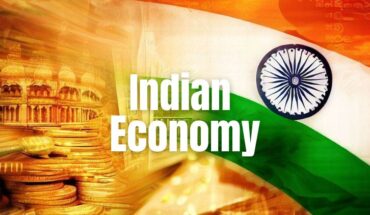
Gone are the days when women were expected to only manage their homes. Today, women are not only excelling at work but are also running some of the biggest businesses.
Delhi, Bengaluru, and Mumbai are among the top 50 cities providing a beneficial and suitable business environment for women entrepreneurs, according to the findings of Dell Technologies’ 2023 Women Entrepreneur Cities (WE Cities) Index.
According to the report, Delhi has shown significant improvement over its score in 2017 by offering a skilled workforce and cost benefits, making it a preferred city for women-led businesses. Mumbai is a new entrant to this list and Bengaluru is one of the top 10 cities in the world which provides accessibility and inclusive policies.
The report ranked 55 global cities based on their ability to attract and foster high-potential women entrepreneurs (HPWE) who want to start and scale a business. This year’s index had 90 indicators across two categories and 5 pillars including an equality sub-pillar.
Delhi has the highest momentum score compared to 2017, the base year. Momentum score provides insights into how a city is progressing compared to its history and others. Factors such as a growing population, low cost of living, and availability of skilled workforce have significantly improved Delhi’s score.
Delhi also benefits from a skilled workforce, ranking 6th in the share of the population with tertiary education. Some potential areas of improvement include increasing the labour force participation rate among women which stands at 16.1 per cent and is significantly lower than many global cities.
Bengaluru is ranked fifth in the top ten operating environments list. This is the first time Bengaluru has appeared on this list, ahead of Paris and Washington DC, and other cities. Bengaluru provides market size, cost, access, and policies that can benefit and accelerate the growth of women entrepreneurs.
Bengaluru has a momentum score of 58.5 and falls under the “Cities on the radar” category of progress. This category is a list of 13 up-and-coming cities that have the potential to host some of the cities’ women entrepreneurs. Further, along with Montpellier, Auckland, Wellington, and Hamburg, Mumbai has also been inducted into the WE Cities Index.
Women entrepreneurs make up approximately one-third of all entrepreneurs globally. According to the latest statistics, there are 252 million female business owners in the world.
In India, we have largely seen the under-representation of women. But things have been changing. The growth of women in businesses across the country has seen powerful effects across our society! Apart from delivering transformational social and cultural outcomes for women it also boosts job creation and is proven the driver of the economy.
Let us have a glance at data according to a case study of Instamojo. Here are some information and data that we have gathered that give you information on the current state of Indian women in business.
There are 15.7 million women-owned- enterprises in India that represent 22% of all enterprises in India. Women own 20% of MSMEs.69% are solopreneurs. Provide employment to 27 million people in India. Women entrepreneurs in India provide direct employment to around 22 to 27 million people, according to a survey by Bains&co. By accelerating the quality and quantity of entrepreneurship among women, they can generate 150-170 million jobs by 2030. According to a recent report, there are currently about 13.5 to 15.7 million women-owned enterprises in India. Although this number is huge, it only represents 20% of all enterprises. If the government and other organisations take rigorous actions to support women in business in the coming years, this number has the potential to increase to 30 million. According to a survey, when provided with equal access to inputs, women-owned enterprises produce equally strong outcomes when compared to those led by men .Women have equal potential as men, but sadly, most are either deprived of resources, or they are stereotyped to only engage in non-revenue-generating activities. Women-owned enterprises are increasing. Over the past decade, women-owned enterprises increased from 14 to 20%, as per government sources. And over the last decade, the number of schemes and other initiatives introduced by national and state governments, investors, banks, and financial and educational institutions to support business among women increased substantially.
There are two resources to help women entrepreneurs,one is Govt funding schemes for women entrepreneurs and non-govt funding schemes for women in business.
According to a recent study, women-owned businesses are mostly managed by a single person. Only 19% of all women enterprises provide employment to large numbers.Roughly 71% of Indian female entrepreneurs employ five people or lesssome women are rural or urban solopreneurs, according to a recent-survey. These are home-based businesses that do not employ workers. And, less than 1% of the total women business owners own scalable enterprises.
India is far below its peers when it comes to women in entrepreneurship.As per the Global Entrepreneurship and Development Institute, India performs below the 20th percentile in the female entrepreneurship index. And this is far below developed markets such as the US and UK, and even developing economies such as Brazil, Russia, and Nigeria.
Approximately 73% of women in business report revenue of approximately ₹10 lakhs in a financial year.
A survey by Forbes reported that women entrepreneurs comprise 13.76% of India. This number has more or less remained the same over the past few decades. This can be attributed to social and financial restrictions faced by women. In 2021, Instamojo saw a 14.83% spike in new female users in comparison to a 5% drop in male new users. This shows that women are more eager to start their own businesses now and want to go online.
Dr.Harvinder Kaur, Associate Professor in Economics, Ambala, views are personal





